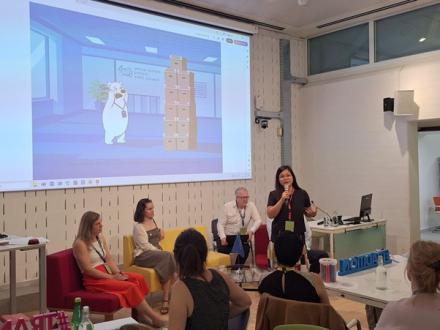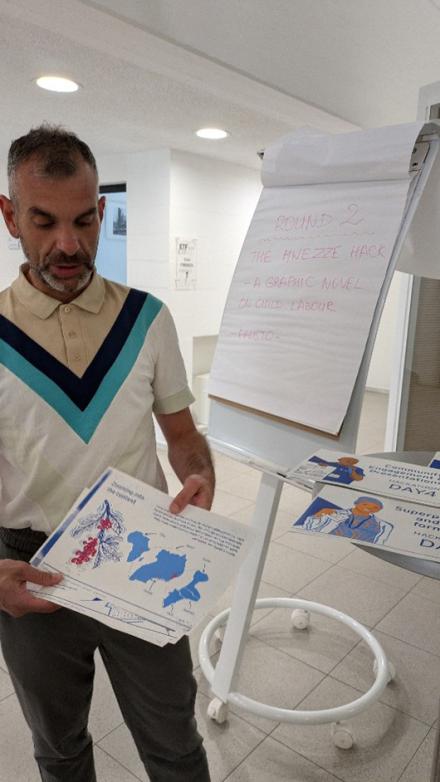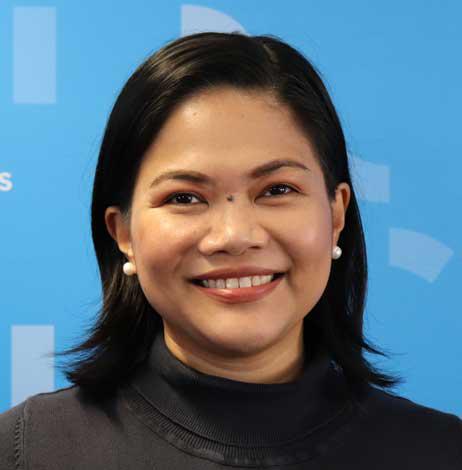
From course factories to bonfire learning: Rethinking inclusion in the digital age
Imagine a bonfire: people gathered in a circle, sharing stories, learning from one another. Now imagine a vending machine: silent, cold, transactional. Which one feels like learning?
Many organizations built digital learning systems that scale fast but often can feel empty or soulless. At the Learn4Dev Annual Meeting and Knowledge Exchange, I explored how we might shift from “course factories” to “bonfire learning”: inclusive spaces that make learners feel seen, safe, and able to speak. This piece shares five principles and a call to redesign learning for warmth, connection, and justice.
The deeper digital divide
We often cite the billions without internet access or the 754 million adults globally who are illiterate. But there’s another dimension to exclusion: in the UK for example, 24% of adults identify as digitally excluded—not just because of infrastructure, but because they don’t feel competent, safe, or seen in the digital world.
So how do we respond as learning professionals? I propose we begin with what I call the “Three S’s” of digital inclusion:
1. Seen
Learners must recognize themselves in the language, context, and culture of what we create. This means multilingual options, regionally relevant case studies, and facilitators who reflect their realities and not just experts speaking in institutional jargon. If learners never see themselves in the learning journey, they will quietly step away.
2. Safe
Psychological and emotional safety is foundational. Learners must feel secure enough to ask questions, share experiences, and challenge ideas without fear. This requires intentional design, trauma-informed facilitation, and inclusive pedagogies especially for communities often left out of global conversations. This is challenging for several organizations conducting training and facilitation but our learners deserve better.
3. Speak
Inclusion is not about passive consumption. It's about co-creation. Learners need the tools, spaces, and trust to shape their learning experience whether that’s through offline adaptations, reflection journals, or storytelling formats that honour their voices.
And to these three, I now add two more based on my discussions with other participants at the Learn4Dev Annual Meeting:
4. Start
We must start where learners are, not where we assume them to be. One-size-fits-all is easy to implement, and with the high demands from learning professionals, it’s comfortable to develop what we’re used to but we also know that it’s rarely equitable. True inclusion means taking the time to understand learners’ realities and walking alongside them in their journey.
5. Slow
At this year’s Learn4Dev, we focused on slow learning and the idea that slowness is a radical act in today’s acceleration-obsessed world. But inclusive learning requires slowness, which refers to the time we spend to listen, to reflect, to adapt. It’s not about delaying progress but deepening it. It is not all about speed in technology adoption and scaling but carving out time for honest reflections.

Unpacking exclusion: Where we often go wrong
Inclusion doesn’t fail just because of limited bandwidth or lack of devices. Often, we design exclusion into our systems without realizing it. I see this happening in three key areas:
a. Our assumptions about learners
We assume learners have the latest tech, stable internet, the privilege of time, cognitive bandwidth, and fluency in English. We assume they are confident in navigating digital platforms and in their own knowledge. These assumptions invisibly exclude those who don’t fit the mold.
b. The tools we use
Most authoring tools are content-heavy, course-centric, and linear. They don’t allow for multiple entry points, reflective pauses, or non-text-based engagement. This narrows our creative options and standardizes learning in ways that limit access and personalization.
c. The platforms themselves
Learning Management Systems (LMS) often act like vending machines offering drop-down lists of courses with no human warmth or interaction. Logins, paywalls, and language barriers quietly turn away those we most need to reach. When we design scale without care, we lose the soul of learning: meaning.
From vending machines to bonfire learning
I believe it’s time to move away from the “course factory” model and toward what I’d like to call bonfire learning.
Bonfire learning is not about passive consumption. It’s about gathering around something meaningful. It creates warmth, community, reflection, and shared purpose. It allows learners to dip in and out, explore in multiple formats, from podcasts and videos to SMS-based learning or offline workshops. It embraces tactility, activating senses to explain complex ideas through story, metaphor, and touch.
Bonfire learning also builds empathy. Not just understanding content, but understanding each other. It invites learners to reflect, to share what stayed with them weeks later, and to shape the conversation as much as they absorb it. Hyper-personalization can lead to isolation and “othering” and what our world needs right now is solidarity which we can only achieve through empathy.

Remix learning: Let them co-create
Alongside bonfire learning, I propose a second shift: remix learning.
We need to stop seeing learners as content consumers and start seeing them as curators. This is where the principles of Open Educational Resources (OER) come in. Can our materials be reused, remixed, and re-shared? Can learners adapt what we offer to fit their needs, contexts, and languages? This a challenging objective especially in the context of intellectual property rights across learning organizations but with leadership and political will, international organizations like the United Nations can achieve this.
At UNSSC, we’ve learned to let go of perfection in favor of relevance. In Haiti, we applied a blended training of trainers with a more inclusive approach, leading on the co-creation of a digital Women’s Empowerment and Leadership for Peacebuilding Toolkit with UN Women Haiti. Designed for flexible use, even in low-connectivity or offline settings, it uses accessible language, visuals, audio and storytelling to support facilitators working with diverse literacy levels. From our colleagues at the ITC SME Academy, we saw how video storytelling was used to train illiterate entrepreneurs to recognize fraud, while at ITCILO, comics were employed to capture real-life dialogues around innovation and solutions to child labor. In each of these examples, it was the tools that were adapted—not the people.

The cost of exclusion
And finally, let us not forget: when we charge high fees for access to learning, we build another wall. Inclusion must be designed from the outset, not as an afterthought. Free, low-bandwidth, accessible options are not charity. They are a matter of justice. With thanks to our donors and partners, UNSSC is able to offer free self-paced and tutored online courses.
Inclusion is not a checkbox.
There are several inclusive design principles and checklist out there but inclusion begins by questioning our assumptions, reimagining our tools, and embracing slowness, empathy, and co-creation. It asks us to trade the ease of mass production for the messiness of human connection.
How can we gather our learners, not around a vending machine, but a bonfire where stories are shared, insights exchanged, and the world is seen more clearly, together?
We are currently seeking partners and collaborators for the Sustainable Development Knowledge Bank, a bold initiative to reimagine learning for inclusion, impact, and accessibility.
If you’re interested in partnering, testing prototypes, or contributing ideas, please contact us at sustainable-development@unssc.org.
